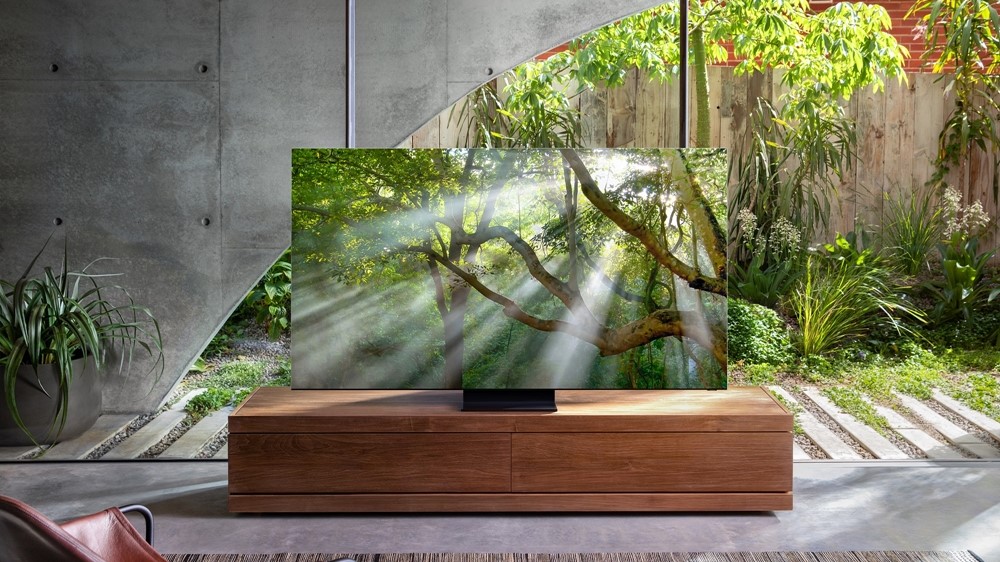Samsung's hybrid OLED TVs to launch in 55-inch, 65-inch sizes – but can they compete?
QD-OLED TVs should still be on track for 2022

Samsung will soon begin producing its QD-OLED panels – the company's answer to LG's widely acclaimed OLED television screens – in 65-, 55- and 34-inch sizes, according to Edaily Korea and internal sources from Samsung Display, echoing what TechRadar's own sources familiar with the plans have been able to verify.
It may signal a new phase in the highly competitive battle for your living room.
Edaily Korea shared the news along with a quote reportedly from Samsung Display CEO Choi Joo-sun:
“QD Display will mass-produce and release 65-inch and 55-inch TVs and 34-inch monitors and decide whether to increase production based on market reaction."
He also said that mass production of these sizes will begin on November 30, 2021. Although this news isn't surprising, given the timeline to roll out QD-OLEDs in 2022, it's good to see Samsung is on track and producing its next-generation display tech for monitors in addition to its new TVs.
This follows reports that Samsung plans to unveil its latest TVs fitted with new QD-OLED panels during CES 2022 – and it's no surprise to hear that the TV maker will be pushing its new hybrid technology in flagship 65-inch and 55-inch sizes. But can QD-OLED compete with regular OLED, QLED, or Mini LED screens?
Will QD-OLED actually improve on regular OLED?
If you haven't heard of QD-OLED before, don't worry. This new TV tech is still in development and has been for years now. The important thing to know is that QD-OLED (also referred to as quantum OLED) is Samsung's big TV tech successor to its standard QLED displays.
Get daily insight, inspiration and deals in your inbox
Sign up for breaking news, reviews, opinion, top tech deals, and more.
It's best to think of QD-OLED as a hybrid of both OLED and QLED display tech, bringing you the best bits of each in a dream display. So, in theory, you'll get OLED's high contrast capability and QLED's fantastic color enhancement, among many other benefits.
Right now, it's impossible to say with certainty whether QD-OLED will deliver on this promise. But so far it seems like QD-OLED is going to be a significant step up compared to previous displays – especially if the price tag of TVs with this new tech inside are anything to go by.
A new report from Korea Economic Daily suggests that Samsung's new TVs will sit "between its top-premium segment of Micro LED TVs and its flagship QLED lines."
This means the company's QD-OLED TVs are likely to be even more expensive than its 2021 flagship, the QN900A 8K TV, which retails for a huge $4,999 / £5,999 / AU$7,579 for the 65-inch model.
So although QD-OLED tech sounds great, you shouldn't get your hopes up about purchasing a brand new QD-OLED TV unless you're a Samsung display enthusiast. Everyone else might have to wait a few years before the price point becomes more affordable.
In the meantime, of course, there are plenty of Black Friday TV deals worth considering, with huge savings going on top-tier TVs.
- OLED vs QLED: the premium TV panel technologies compared
Becca is a contributor to TechRadar, a freelance journalist and author. She’s been writing about consumer tech and popular science for more than ten years, covering all kinds of topics, including why robots have eyes and whether we’ll experience the overview effect one day. She’s particularly interested in VR/AR, wearables, digital health, space tech and chatting to experts and academics about the future. She’s contributed to TechRadar, T3, Wired, New Scientist, The Guardian, Inverse and many more. Her first book, Screen Time, came out in January 2021 with Bonnier Books. She loves science-fiction, brutalist architecture, and spending too much time floating through space in virtual reality.
